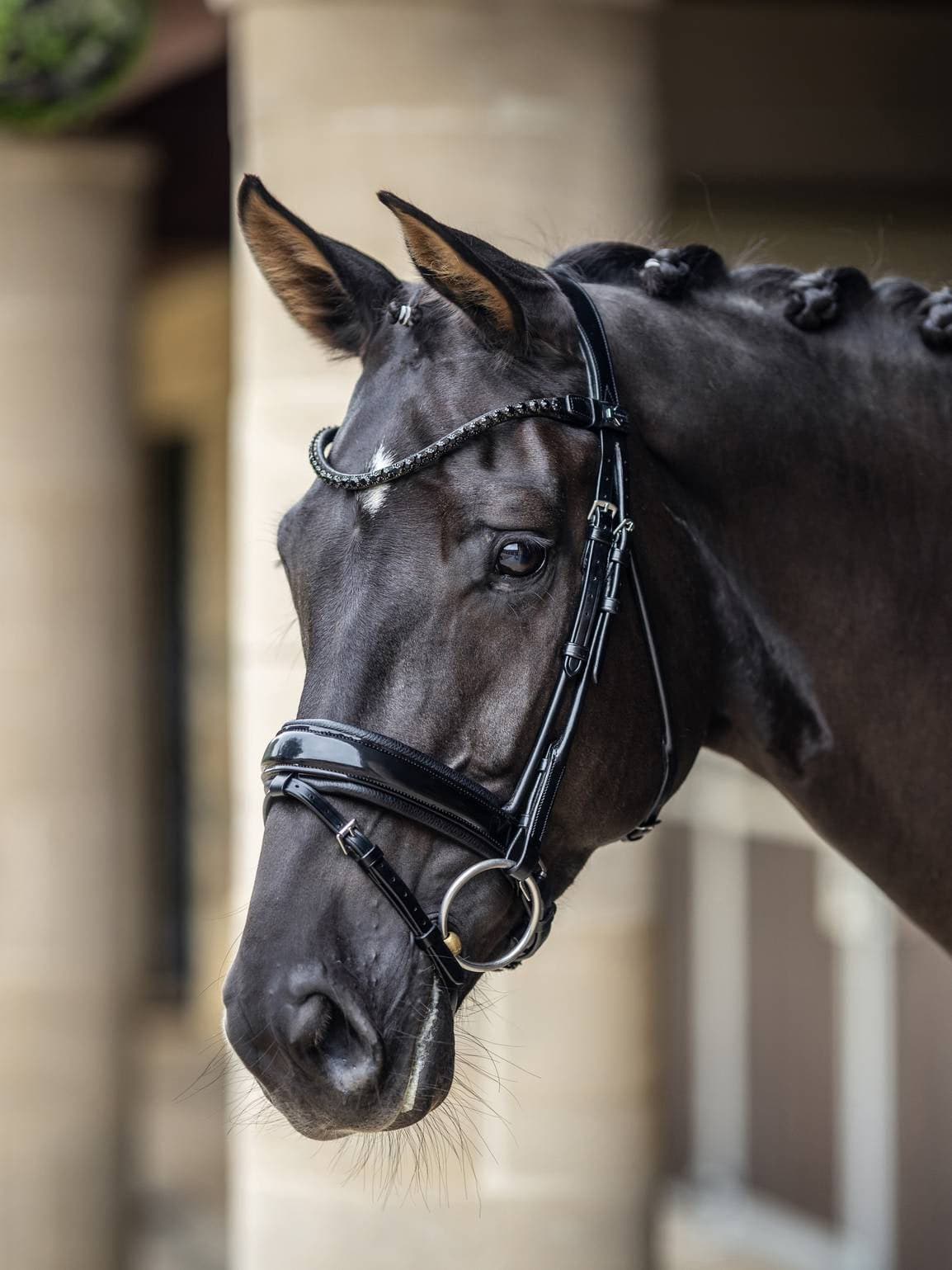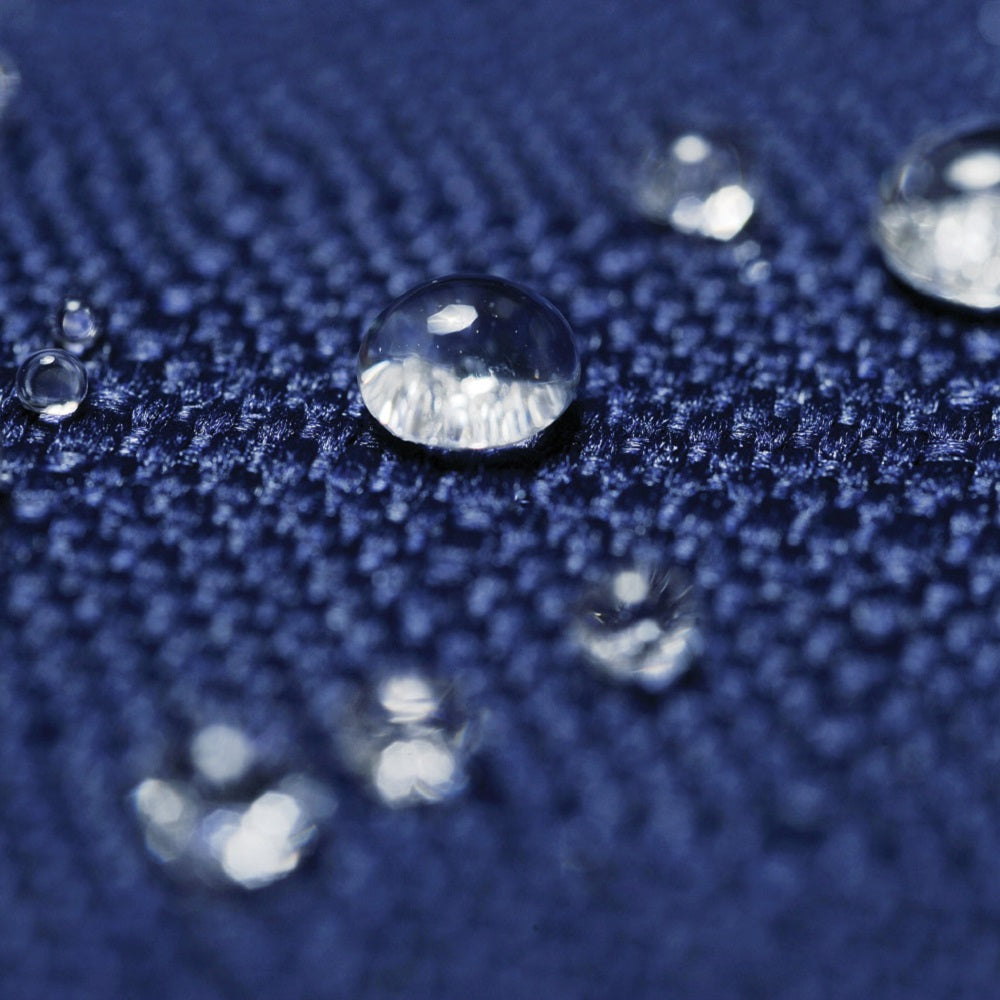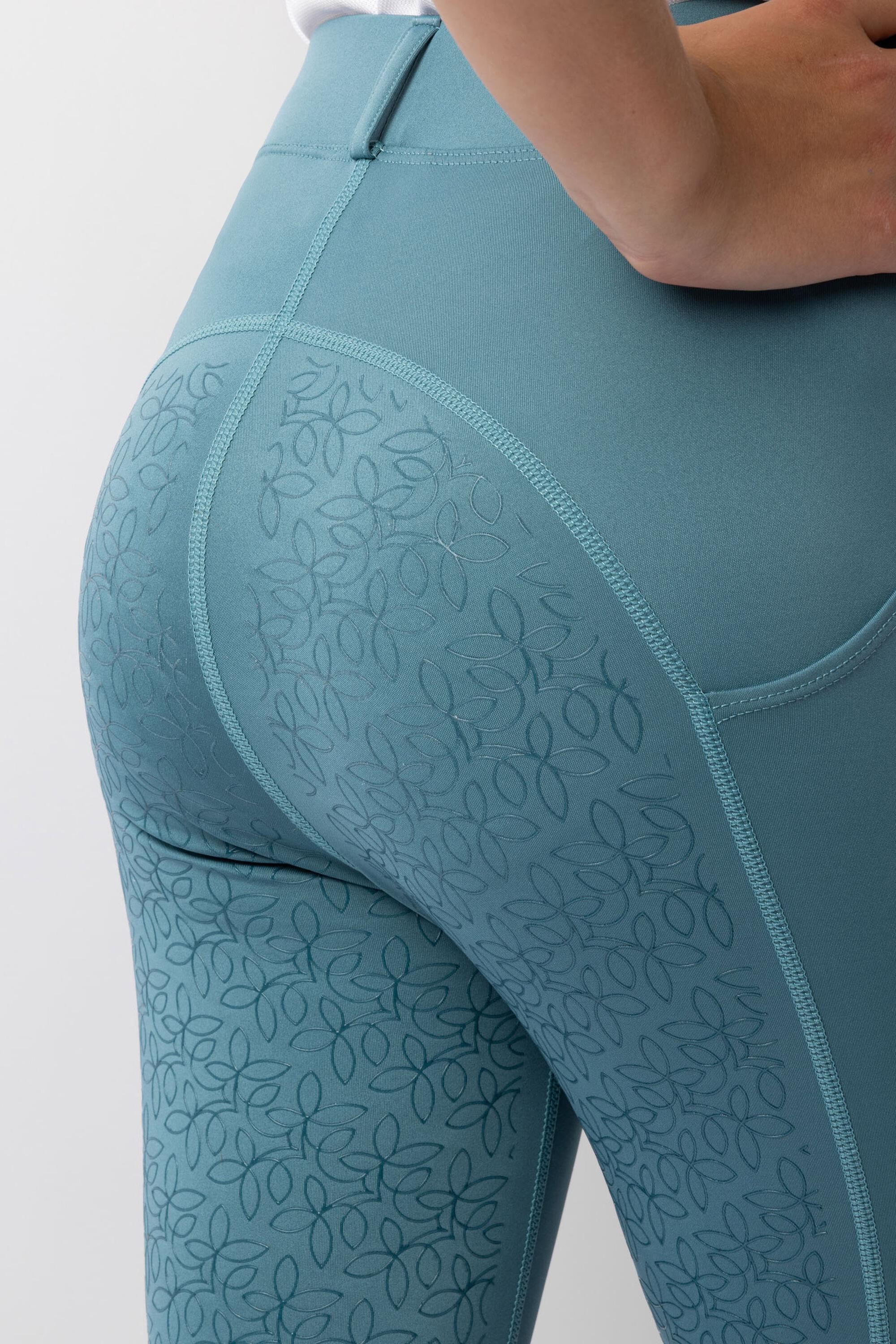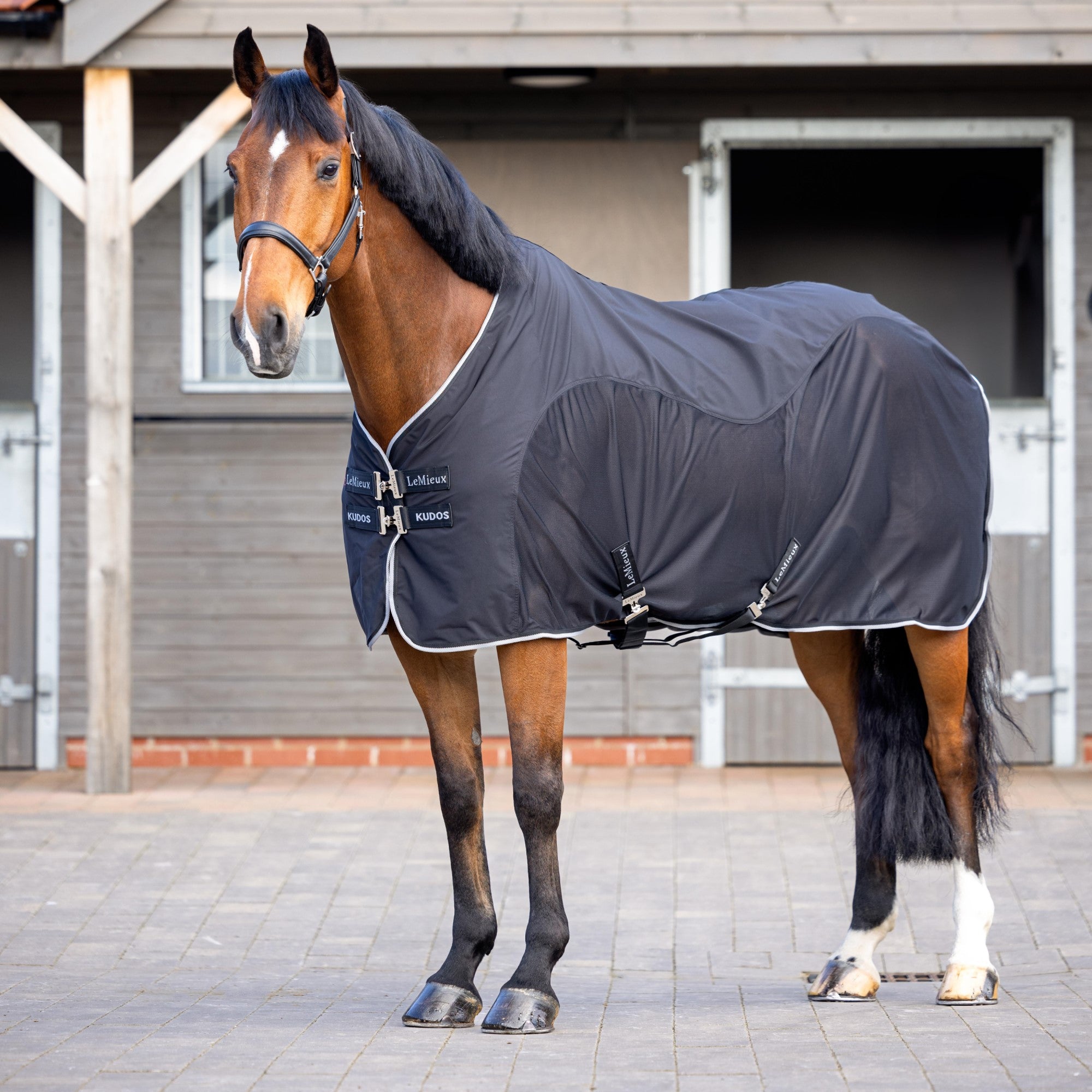HorseSports stock a comprehensive range of horse blankets, canvas covers and show rugs. Our horse covers are available from our online horse gear range, or you can choose your horse covers at our Auckland equestrian supplies store in Takanini.
Our winter horse covers include Weatherbeeta turnout rugs, Saxon, Flair and Zilco horse covers and a range of shoulder guards, hoods, tail bags and neck covers for horses wearing covers. We stock summer horse covers including summer turnout rugs, cotton sheets, waterproof synthetic horse rugs, and we offer a large range of show rugs, mesh horse blankets, stable rugs and jute under-rugs. In those awkward in between seasons? No problem - check out the mid-season range of horse covers.
So, how do you know which horse rug to choose from this huge range?
Every horse is an individual
It's important to take into account your horse's age, health, natural coat thickness, mane length for warmth, if they have been clipped - and importantly, their environment. What weather do you expect, and do they have good shelter available in their field. For example:
- a fine coated Quarterhorse or Arabian, or older thoroughbred may only 'need' a 100gsm cover, but you may find that they keep better condition with 200gsm
- a solid healthy younger horse with a dense coat may experience wind chill in an exposed hill paddock
- a medium build horse living in the North of New Zealand with a normal coat thickness may be fine un-covered, with just a good shelter building in their field.
To check if your horse’s cover is cosy enough, slide your hand under the cover; and under their mane. Their skin should be warm and dry, not chilled or damp with sweat.
Most horses will only require a very light horse cover in summer, such as fly sheets, cotton horse rugs, or lightweight unlined summer turn out rugs if it rains.
What is your aim in using a horse rug?
Reasons people use horse covers range from:
- helping a growing horse hold condition through winter
- protecting a dark coated horse from summer heat by using a cool cotton summer sheet
- keeping off those nasty bots and biting flies
- protecting the health of an older horse with a warmer rug
- using an unlined cover to prevent wind chill on a solid, healthy horse
- using a cotton cover and tailbag to keep your horse clean before a show
- coping with heavy snow or rain
- protection from normal weather when a horse is clipped
- even protecting a horse from a dominant paddock mate!
How often can you visit your horse?
Combo rugs with detachable neck rugs, or unlined lightweight turnout rugs are a great option when you can't be sure you can visit your horse every day. It's better to under-rug than over-rug, and these options give you a little more leeway. Having said that, if in doubt about your ability to get to your horse, it may be better to leave them uncovered just in case, as no cover at all is better than a wet rug.
Why does GSM matter in horse covers?
It's a measure of insulation and warmth, because GSM is used to indicate the weight (grams per metre) of the rug fabric, including the fill. But GSM doesn't tell you everything about a horse rug's warmth potential, because the material used in the fill may have different warmth properties (ie wool vs polyfill vs fleece).
Most modern rugs use polyfill as the insulation fibre, which creates an insulating layer between the wet, cold waterproof rug outer layer and the horse's body. This layer traps body heat generated by your horse, reducing the energy your horse uses to keep warm, but also helping keep the outer layer of the rug dry from the inside. The thicker the layer of polyfill, the bigger and more effective the insulating layer, and the higher the horse rug's GSM.
You can check the thickness and warmth of a horse rug's insulation layer by looking at the GSM rating.
- Around the Far North and Auckland, most horses only require a 100gsm winter cover, or even just an unlined cover to prevent wind chill
- If your horse is a good doer and stays warm easily, a 100gsm lightweight cover may be fine in winter
- For older horses or clipped horses a 200gsm rug can give them the extra warmth they need
- In the rest of the North Island, winter horse covers are generally 220-240gsm
- Horses in the snowy South may benefit from 300gsm winter rugs
- If your horse is older, or clipped in winter, they will often enjoy a 200-300gsm winter cover, and will need a neck cover (which could be detachable)
- You might also decide to have unlined rugs or even mesh combo waterproof rugs on hand for days with lighter rainfall or chilly winds, just to provide a waterproof windbreak.
Horse cover sizing
Horse cover sizes are measured in feet, except for European made covers which will be marked in centimetres. It is worth measuring your horse before buying a cover if you aren’t completely sure what size cover they need.
For horse covers made in NZ and Europe, measurement from the wither to the top of the tail. For UK and US covers, measure from the centre of the horse’s chest to the furthest point of the rump.
What does denier mean?
The denier of a cover is a measure of how thick the threads in the material on the outside are, and with winter horse blankets, thicker means tougher. 600 denier means finer threads, while 1680 denier is tough and extremely hard wearing due to much thicker threads.
For a horse who isn't a 'rug-destroyer' and lives in a warmer climate, the finer fabric of a 600D rug should be fine, but if your horse is tough on their rugs or lives on the windy Manawatu or in the Southern Mountains, a thicker, tougher 1200D will be a better choice.
A good mid-range denier is 1200D which is what we stock most of in our winter cover range as it offers a long lasting hard wearing fabric.
Horse cover tips
Make sure your horses rug is waterproof. A sodden rug can bring down a horse's body temperature just like us if we walked around outside in wet clothes for hours. A horse's fur is designed to create an insulated layer but when it's pressed down by a leaking rug, it can't provide that natural protection.
For an unlined cover in very heavy rain, consider adding a cotton summer sheet or a snuggly jute rug underneath as this creates an insulating layer and holds the cover off the horse if it gets thoroughly drenched.
In extremely chilly nights you can add a fleece rug under your horse's normal blanket and remove it in the morning.
Remember that different brands suit differently shaped horses, and it's better to choose a brand that fits your horse well than to rely on shoulder guards, although these are a great short term option if you want to get the last bit of wear out of a rug.
Cotton mix summer rugs with mesh panels are a great compromise between keeping sun and flies off, and letting the cooling breeze through.
Lots of horses will be warm enough most days without a neck rug, as a good 100gsm cover will keep their core temperature in a nice range, but if the sun comes out unexpectedly they will be able to release some heat through their neck area.
We’re always happy to help you find just the right horse blanket for each horse. We look forward to talking!







Share:
How do Ophena stirrups work? Magnetic safety stirrups explained.
Understanding & Care of Waterproof Horse Rugs